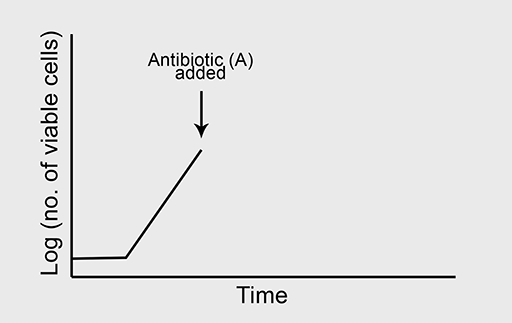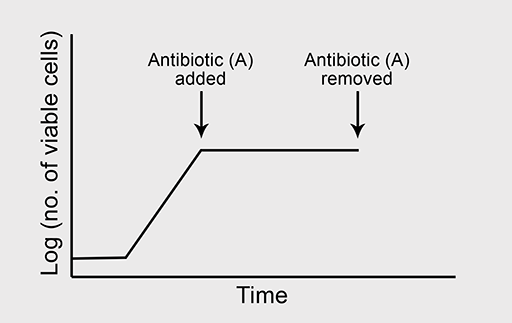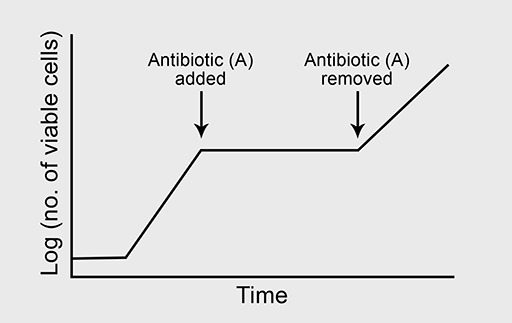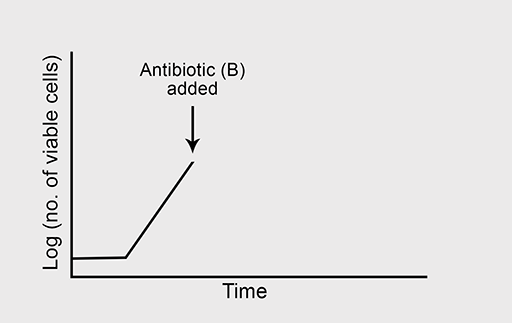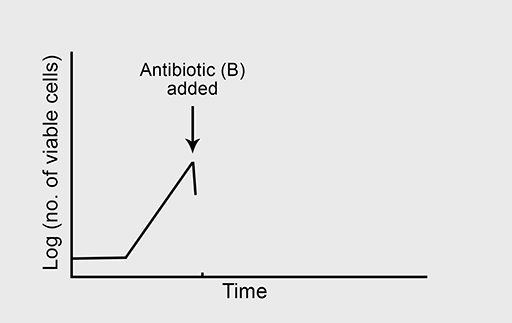4.3 Bactericidal versus bacteriostatic antibiotics
While some antibiotic classes have consistent antibacterial effects, such as ß-lactams which are nearly always bactericidal, the activity of other classes may depend on the dose of antibiotic prescribed or how long the treatment lasts. For example, fluoroquinolones and aminoglycosides, while usually bactericidal, may be bacteriostatic when used at low concentration.
You should by now have a good idea of how antibiotics interact with bacterial cells. Activity 4 looks at what happens to the bacterial population as a whole when antibiotics are administered.
Activity 4 Effect of antibiotics on bacterial growth
In Week 1 you learned that bacteria are at their most susceptible to antibiotic attack when they are actively growing. In this activity you consider what happens to a bacterial culture when antibiotics are introduced during this exponential phase of growth.
Bacteriostatic antibiotics
(a) Figure 11a shows the normal growth curve of a bacterium which is sensitive to the bacteriostatic antibiotic ‘A’. Explain what you would expect to happen to the rate of bacterial growth when A is added to the culture in high concentration. You should assume that growth conditions are otherwise optimal.
(b) Predict what will happen to bacterial growth if antibiotic A is removed from the culture at the point indicated on the graph.
Bactericidal antibiotics
Figure 12a shows the normal growth curve of a bacterium which is sensitive to the bactericidal antibiotic ‘B’. Explain what you would expect to happen to the rate of bacterial growth when B is added to the culture in high concentration. You should assume that growth conditions are otherwise optimal.
Bactericidal antibiotics kill susceptible bacteria during the exponential phase of growth and cure the infection.
Bacteriostatic antibiotics stop bacterial growth even though the cells remain viable. This allows time for the host’s immune system to be activated and target the bacterial pathogen – again effecting a cure.

